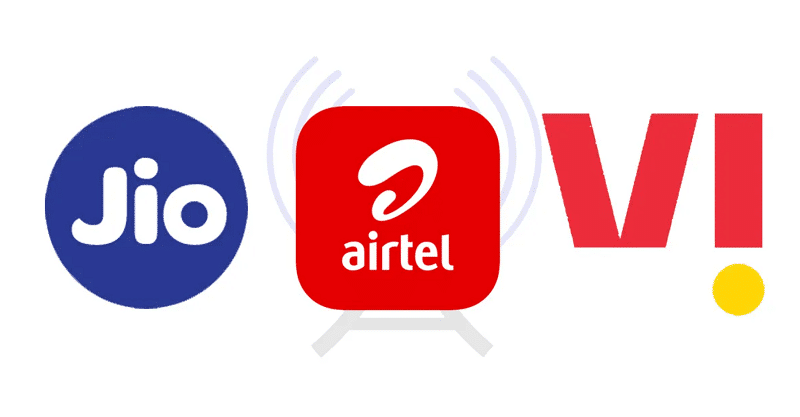In the ever-evolving landscape of the Indian telecommunications industry, one player has consistently stood out. Reliance Jio, often simply referred to as Jio, has not only maintained its leading position but has continued to thrive. With over 440 million subscribers, Jio boasts an impressive 52% market share in both wired and wireless services in India. Let’s delve deeper into the key insights of this remarkable feat.
A Year of Jio Dominance
Jio has not been a one-hit wonder but a consistent champion. It has retained its status as the largest cellular operator in India for an entire year. Its subscriber base has surged to a whopping 440 million, a testament to its unwavering popularity. This success story is in stark contrast to the struggles faced by its competitors, BSNL and Vi, who have been consistently losing subscribers.
Wired Broadband Frontier
When it comes to wired broadband, Jio is again leading the charge with a commanding market share of 33.13%. This dual dominance in both wired and wireless services underscores Jio’s prowess in catering to the diverse needs of the Indian population.

Jio’s Subscriber Surge
The Telecom Regulatory Authority of India (TRAI) recently released its monthly performance report for telecom operators, and the numbers speak volumes. Jio emerged as the top gainer, adding the highest number of new subscribers in the month of July, closely followed by Airtel. Meanwhile, Vi and BSNL found themselves in a downward spiral, losing customers consistently.
Current Landscape
According to the latest data, Jio maintains its throne as the largest wireless service provider in India with a staggering 442.49 million subscribers. Airtel is no slouch either, with 244.41 million users. Vi, however, lags behind with 124.27 million users, and BSNL trails with 20.87 million.
Vi Challenge
Vi’s ongoing struggles to pay its spectrum dues have hampered its 5G deployment efforts. Customers are flocking to Jio and Airtel due to their better network availability. In contrast, BSNL is diligently working to deploy 4G services nationwide.
The Rise of Mobile Number Portability
TRAI reported a rise in Mobile Number Portability (MNP) requests, indicating that customers are actively seeking better alternatives. In July alone, 11.77 million users switched their cellular providers. This trend underscores the dynamic nature of the Indian telecom market.
Private Sector Dominance
As of now, the private sector commands a staggering 91% market share of total cellular users in India, with the remaining 9% held by BSNL and MTNL. This imbalance is a clear indicator of the competitive edge enjoyed by private players.
Active Users vs. Total Users
Notably, Airtel boasts the highest ratio of active users to total users, closely followed by Jio. In contrast, BSNL and MTNL have only 52% and 28% active users, respectively, out of their total user base.
Jio’s Broadband Triumph
Beyond wireless services, Jio is also the reigning champion in the broadband market. As of July 2023, Jio commands a remarkable 33.13% market share in the broadband sector, boasting a total of 9.4 million active users.
Airtel’s Wired Success
Airtel is not far behind in the wired broadband arena, securing the second spot with a market share of 25.03% and 6.71 million subscribers.
BSNL and MTNL’s Resilience
BSNL and MTNL continue to maintain a significant market share in wired broadband, accounting for 28.43% of users in this segment, with 3.68 million subscribers.
Competition
Apart from these leading players, there are several smaller-scale broadband services contributing to the remaining 20% of the wired internet market in India. This diversity reflects the varied choices available to consumers.
FWA: The Future of Broadband
Both Jio and Airtel have embarked on a new frontier by launching Fixed Wireless Access (FWA) services in India, known as Jio AirFiber and Airtel Xtream AirFiber, respectively. Leveraging their 5G spectrum, these operators are poised to revolutionize the broadband market in metropolitan cities. The ease of setup and potential speeds of up to 1 Gbps make FWA services a promising avenue for the future.
In conclusion, Jio’s dominance in both wired and wireless services is a testament to its adaptability and unwavering commitment to providing top-notch services to its subscribers. While Jio continues to reach new heights, its competitors face the daunting task of catching up in this fiercely competitive landscape.
FAQs
1. Is Jio the largest telecom operator in India?
Yes, Jio holds the title of the largest cellular operator in India with over 440 million subscribers.
2. Why are Vi and BSNL losing subscribers?
Vi faces challenges in paying its spectrum dues, while BSNL is working on deploying 4G services, which has affected their subscriber base.
3. What is Mobile Number Portability (MNP)?
MNP allows users to switch their cellular providers while retaining their phone numbers.
4. How do Jio and Airtel plan to revolutionize broadband with FWA services?
Jio and Airtel are deploying Fixed Wireless Access services, leveraging 5G spectrum for high-speed broadband in metropolitan areas.
5. What is the market share of private sector vs. state-owned telecom companies in India?
Private sector telecom companies account for 91% of the market share, while BSNL and MTNL hold the remaining 9%.












